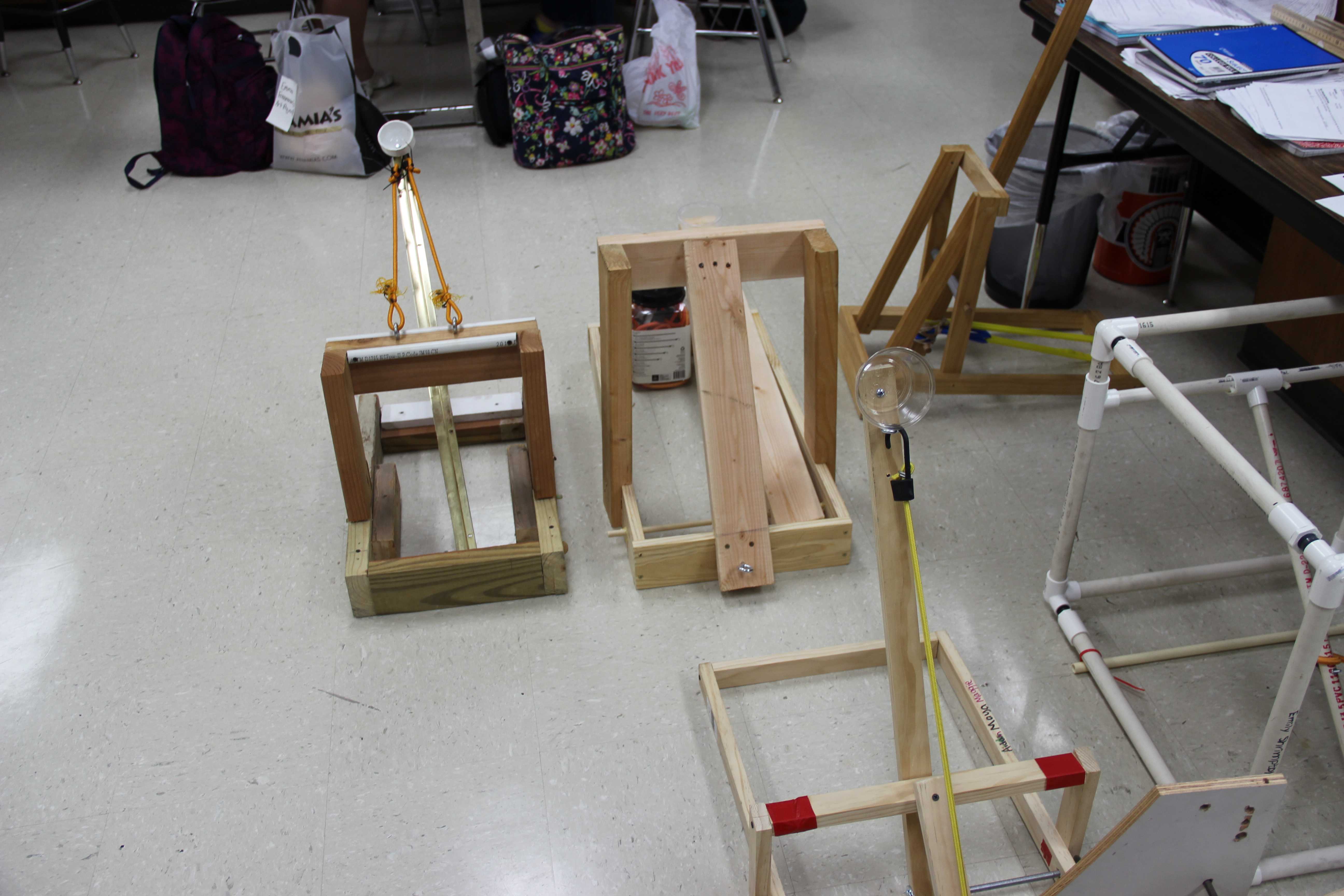

This is very useful for helping you come up with the winning design in a trebuchet competition!
#Catapult classes simulator
To assist you in building a trebuchet you can use this simulator to help you come up with the design that throws the payload the farthest. In this page the basic equations describing the physics of a trebuchet will be introduced. This is the heart of the physics behind a trebuchet and is the reason why a trebuchet has such great launching power.įor a more in-depth explanation on how a trebuchet works see Trebuchet Physics. This results in a large increase in linear velocity of the payload which far exceeds that of the end of the beam to which the sling is attached. The figure below illustrates the trebuchet at the release point.Īs the beam rotates clockwise (due to the falling counterweight), the payload experiences centripetal acceleration which causes it to move outwards (since it is unrestrained). For a smaller δ the release angle α decreases. For a greater δ the release angle α increases. The release angle α can be adjusted by changing the finger angle δ. At this point the ring (which is connected to the sling and loops around the finger for support) slips off and the payload is launched. The sling releases when a certain angle α is reached. However, increasing the mass of the counterweight beyond a certain point will not help, since the limiting speed of the falling counterweight is free-fall speed. However, because the counterweight pivots around a much shorter distance, its weight must be much greater than the weight of the payload, to get a high launch velocity. This is the principle of mechanical advantage, and is what allows the payload to reach a high launch velocity. The advantage of this is that the payload end of the beam reaches a much higher linear velocity than the counterweight end of the beam. The beginning of the launch is illustrated in the figure below.Īs you can see, the counterweight pivots around a much shorter distance than the payload end. In some designs a guide chute is used to guide the sling along and support the payload until the speed is great enough to hold it in the pouch alone. A detailed explanation of it is given on the page on Trebuchet Physics. The physics behind a trebuchet is fairly complex. For maximum launch speed the counterweight must be much heavier than the payload, since this means that it will "fall" quickly. In addition, it allowed greater consistency in the throws due to the fact that the same amount of energy could be delivered every time, by way of a raised counterweight.Ī trebuchet works by using the energy of a falling (and hinged) counterweight to launch a projectile (the payload), using mechanical advantage to achieve a high launch speed.

The payload could be thrown a far distance and do considerable damage, either by smashing down walls or striking the enemy while inside their stronghold.Īmong the various types of catapults, the trebuchet was the most accurate and among the most efficient in terms of transferring the stored energy to the projectile. These types of catapults will be described, and pictures and illustrations will be included.Ī trebuchet is a battle machine used in ancient times to throw heavy payloads at enemies. The main types of catapults used were the trebuchet, mangonel, onager, and ballista. The catapult has proven to be a very effective weapon during ancient times, capable of inflicting great damage. The three primary energy storage mechanisms are tension, torsion, and gravity. Catapult physics is basically the use of stored energy to hurl a projectile (the payload), without the use of an explosive.


 0 kommentar(er)
0 kommentar(er)
